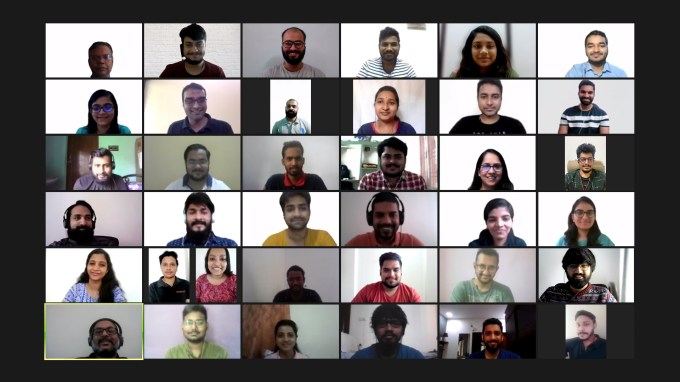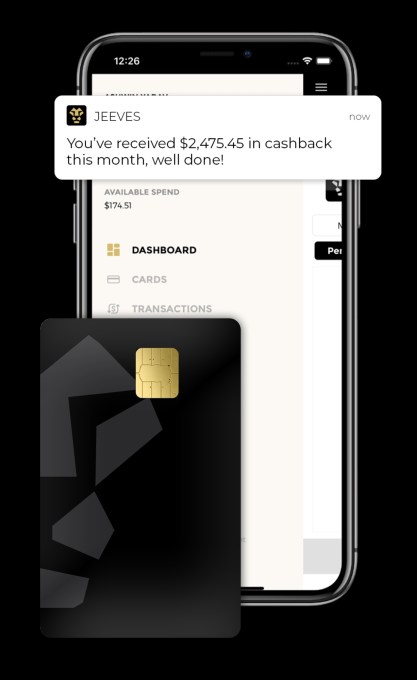The world of accessibility has experienced a tipping point thanks to the pandemic, which drove people of all abilities to do more tasks and shopping online.
For the last year, the digital world was the only place brands could connect with their customers. A Forrester survey found that 8 in 10 companies have taken their first steps toward working on digital accessibility.
What’s driving this change besides the increased digital interactions? Fortune 500 companies are finally starting to realize that people with disabilities make up 1 billion of the world’s market. That population and their families control more than $13 trillion in disposable income, according to Return on Disability’s “The Global Economics of Disability.”
However, only 36% of companies in Forrester’s survey are completely committed to creating accessible digital experiences.
Although digital accessibility has been around for decades, companies have not caught on to its benefits until recently. In its latest survey, the WebAIM Million analysis of 1 million home pages found accessibility errors on 97.4% of the websites evaluated.
What does this mean for you? Why should you care about this? Because this is an opportunity for your company to get ahead of the competition and reap the rewards of being an early adopter.
The benefits of digital accessibility
Companies are now realizing the advantages of creating accessible products and properties that go beyond doing the right thing. For one, people are living longer. The World Health Organization says people aged 60 and older outnumber children under 5. Moreover, the world’s population of those who are 60 and older is expected to reach 2 billion by 2050, up from 900 million in 2015.
W3C Web Accessibility Initiative provides an overview on Web Accessibility for Older Users. Here’s what it reveals.
- Hearing loss affects 47% of people aged 61 to 80.
- Vision decline affects 16% of people aged 65 to 74.
- Mild cognitive impairment affects 20% of people over 70.
- Arthritis affects more than 50% of people over 65.
In short, developing accessible digital products helps you reach a much larger audience, which will include you, your co-workers and your family. Everyone is going to become situationally, temporarily or episodically impaired at some point in their lives. Everyone enters a noisy or dark environment that can make it harder to see or hear. An injury or an illness can cause someone to use the internet differently on a temporary basis. People with arthritis, migraines and vertigo experience episodes of pain and discomfort that affect their ability to interact with digital devices, apps and tools.
Additionally, no one has ever advocated against making products and websites accessible to more people. Despite this, the relative universal appeal of accessibility as a principle does not mean that it will be as easy as explaining the need and getting people on board to make major organizational changes. A lot of work remains in raising awareness and educating people about why we need to make these changes and how to go about it.
You have the why. Now here are five things to help you with how to make changes in your company to integrate accessibility as a core part of your business.
1. Tap the right people to create accessible experiences
According to the second annual State of Accessibility Report, only 40% of the Alexa Top 100 websites are fully accessible, proving the needs of people with disabilities are, more often than not, being overlooked when creating web experiences.
To design for people with disabilities, it’s important to have an understanding of how they use your products or web properties. You’ll also want to know what tools will help them achieve their desired results. This starts with having the right people on board.
Hiring accessibility experts to advise your development team will proactively identify potential issues and ensure you design accessibly from the start, as well as create better products. Better yet, hiring people with disabilities brings a deeper level of understanding to your work.
2. Hire designers passionate about accessibility
Having accessibility experts on your team to provide advice and guidance is a great start. However, if the rest of your team is not passionate about accessibility, that can turn into a potential roadblock. When interviewing new designers, ask about accessibility. It’ll gauge a candidate’s knowledge and passion in the area. At the same time, you set an expectation that accessibility is a priority at your organization.
Being proactive about your hires and making sure they will contribute to a culture of accessibility and inclusion will save you major headaches. Accessibility starts in the design and user experience (UX) phase. If your team doesn’t deliver there, then you will have to fix their mistakes later, essentially delaying the project and costing your organization. It costs more to fix things than to build them accessibly in the first place.
3. Remember that accessibility is for everyone
People deciding whether to invest in accessibility often ask themselves how many people are going to use the feature. The reasoning behind the question is understandable from a business perspective; accessibility can be an expense, and it’s reasonable to want to spend money responsibly.
However, the question is rooted in one of the biggest misconceptions in the field. The myth is that accessibility only benefits people who are blind or deaf. This belief is frustrating because it greatly underestimates the number of people with disabilities and minimizes their place in society. Furthermore, it fails to acknowledge that people who may not have a disability still benefit greatly from accessibility features.
Disability is a spectrum that all of us will find ourselves on sooner or later. Maybe an injury temporarily limits our mobility that requires us to perform basic tasks like banking and shopping exclusively online. Or maybe our vision and hearing change as we age, which affects our ability to interact online.
When we understand that accessibility is about designing in a way that includes as many people as possible, we can reframe the conversation around whether it’s worth investing in. This approach sends a clear message: No business can afford to ignore a fast-growing population.
Think about it this way: If you have a choice of taking an elevator or the stairs, which would you take? Most pick the elevator. Those ramps on street corners called curb cuts? They were initially designed for allowing wheelchairs to cross the street.
Yet, many use these ramps, including parents pushing strollers, travelers pulling luggage, skateboarders rolling and workers moving heavy loads on dollies. A feature initially designed for accessibility benefits far more people than the original target audience. That’s the magic of the curb-cut effect.
4. Hire agencies that build accessibly by default
Whether you have a small team or are expanding an in-house accessibility practice, working with an agency can be an effective way to embrace and adopt accessible practices. The secret to a successful partnership is choosing an agency that will help your team grow into its accessibility practice.
The key to finding the right agency is selecting one that builds accessibly by default. When you know you are working with an agency that shares your organization’s values, you have a trusted partner in your mission of improving accessibility. It also removes any guesswork or revisions down the line. This is a huge win, as many designers overlook details that can make or break an experience for a user with a disability.
Working with an agency focused on providing accessible experiences narrows the likelihood of errors going unnoticed and unremedied, giving you confidence that you are providing an excellent experience to your entire audience.
5. Integrate accessibility into your supply chain
On any given day, enterprises and large organizations often work with dozens of stakeholders. From vendors and agencies to freelancers and internal employees, the nature of business today is far-reaching and collaborative. While this is valuable for exchanging ideas, accessibility can get lost in the mix with so many different people involved.
To prevent this from happening, it’s important to align these moving pieces of a business into a supply chain that is focused on accessibility at every stage of the business. When everyone is completely bought in, it cuts the risk of a component being inaccessible and causing issues for you in the future.
The startup advantage
A major challenge that comes up repeatedly is the struggle to change the status quo. Once an organization implements and ingrains inaccessible processes and products into its culture, it is hard to make meaningful change. Even if everyone is willing to commit to the change, the fact is, rewriting the way you do business is never easy.
Startups have an advantage here: They do not bear years of inaccessible baggage. It’s not written into the code of their products. It’s not woven into the business culture. In many ways, a startup is a clean slate, and they need to learn from the trials of their more established peers.
Startup founders have the opportunity to build an accessible organization from the ground up. They can create an accessible-first culture that will not need rewriting 10, 20 or 30 years from now by hiring a diverse workforce with a passion for accessibility, writing accessible code for products and web properties, choosing to work with only third parties who embrace accessibility and advocating for the rights of people with disabilities.
Many of these considerations here have a common denominator: culture. While most people in the technology industry will agree that accessibility is an important and worthy cause to champion, it has a huge awareness problem.
Accessibility needs to be everywhere in software development, from requirements and beyond to include marketing, sales and other non-tech teams. It cannot be a niche concern left to a siloed team to handle. If we, as an industry and as a society, recognize that accessibility is everyone’s job, we will create a culture that prioritizes it without question.
By creating this culture, we will no longer be asking, “Do we have to make this accessible?” Instead, we’ll ask, “How do we make this accessible?” It’s a major mindset shift that will make a tangible difference in the lives of 1 billion people living with a disability and those who eventually will have a disability or temporary, situational or episodic impairments affecting their ability to use online and digital products.
Advocating for accessibility may feel like an uphill battle at times, but it isn’t rocket science. The biggest need is education and awareness.
When you understand the people you build accessible products for and the reasons they need those products, it becomes easier to secure buy-in from people in all parts of your organization. Creating this culture is the first step in a long quest toward accessibility. And the best part is, it gets easier from here.
https://ift.tt/eA8V8J Make accessibility part of your startup’s products and culture from day one https://ift.tt/3yJLbGi





























